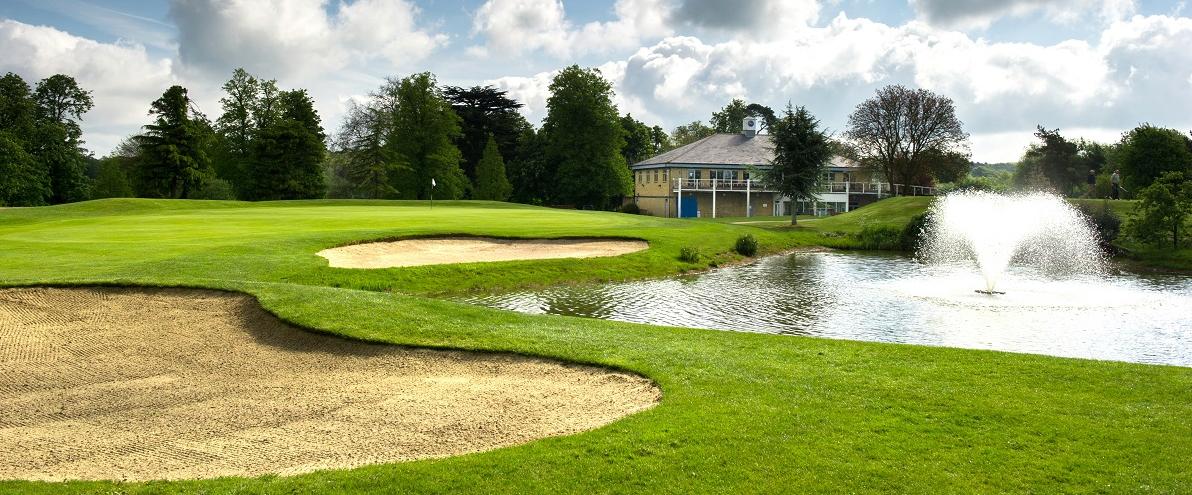
Golf Business International member Mark Smith, of Smith Leisure, has spent the last 27 years helping clients on property matters relating to UK golf venues. GBN asked him a few questions about his career and the state of the industry.
How did you get started in the golf industry?
To get my chartered surveying qualifications I worked in London’s West End with one of the leading commercial property firms between 1988 and 1991. I did strategic development land planning, dealing with large redundant property assets owned by British Coal and the NHS. The aim was to get valuable planning consents for housing, retail, office or industrial schemes and then sell the sites. It was good grounding for my later work in the golf industry.
The UK property sector was a major casualty in the 1990s’ recession and 400 out of the 900 staff at the firm where I worked lost their jobs in one brutal 24-hour cull – including me. The speed at which the booming 1980s’ property market nose-dived on the back of the economic recession and rising interest rates made a lasting impression on me.
As a keen golfer I wanted my next job to be property related in the golf industry, so I joined the golf department at William Hillary Leisure & Hotels. The UK golf property market was moving at a fast pace and the golf course construction boom was in full swing.
What work do you now do in the golf industry?
The underlying theme of my work is helping clients add significant financial value by focussing on relevant property value issues regarding UK golf venues. This comes in several forms, such as a strategic analysis to enhance financial value, straightforward property valuation advice, or handling negotiations relating to golf property values. I also do a fair amount of expert witness work for court/tribunal cases and public planning inquiries.
Have you any key observations on the prospects for those running UK golf venues?
Perhaps the biggest thing I have learnt over the years is the overwhelming power of underlying external structural forces – and if you ignore them, you do so at your peril. By ‘external’ I mean largely or totally out of the direct control of a golf venue operator. If the external structural forces are favourable for any industry it generally thrives financially; if they are not then any industry struggles.
Regrettably, at a macro level, I think the external structural forces for those running golf venues are extremely challenging. As I see it, generally, the main difficult external factors are:
- too many golf venues chasing the custom of too few golfers;
- a significant proportion of golf venues no longer being fit for purpose for modern golfing needs and/or customer expectations;
- a lack of time (real or perceived) to play golf – unless you are over 60 and retired;
- an ageing golfing population not being replenished quickly enough with youngsters and new players; and
- increasingly erratic weather which can wreak havoc with golfer participation rates.
There are, of course, some positive structural forces, but, unfortunately, the pace of growth in these is simply not fast enough at the moment to counteract the above. A major opportunity is increasing female golfer participation given how very low this is compared to current male participation rates.
The net effect of these external structural forces is that the underlying profitability of those running golf courses has fallen a lot in the last five to 10 years. And this is despite a great deal of hard work, cost cutting and concerted efforts by golf operators to swim against the strong tide of the negative structural forces.
One of the major problems of falling underlying profitability is that most golf venues don’t generate enough funds from day-to-day trading to reinvest back into the business to make the venue fit for purpose to generate the future profits in future years. Too many golf venues now look tired, dated, starved of capital investment and unenticing. When they look like that, they aren’t going to be magnets to attract new players into the game to replace the ageing golfing population.
Do you think there is a solution to this problem?
I think there is, but it is not without a lot of pain, heartache and stress for quite a few golf venues and their operators. We all know evolution in nature is based on the structural principle of the survival of the fittest, and so is capitalism – in with the new and fresh, out with the worn out and decaying.
 On a pure structural basis – taking emotional factors out of the equation – I believe we need a significant number of golf venues to close. I would go as far as saying that we could do with one in five closing. If that happened, it would improve the supply demand balance between venues and golfers. I think the industry would come out the other side stronger, fitter and leaner for long-term financial sustainability.
On a pure structural basis – taking emotional factors out of the equation – I believe we need a significant number of golf venues to close. I would go as far as saying that we could do with one in five closing. If that happened, it would improve the supply demand balance between venues and golfers. I think the industry would come out the other side stronger, fitter and leaner for long-term financial sustainability.
Remaining venues would get proportionately more golfers, which in turn puts less pressure on prices having to fall to retain custom. The combination of increased volume of golfers using a venue at a higher, average price point would boost revenue and profitability and would give more operators the confidence to invest to make their venues continually fit for purpose to meet modern expectations. Better, modern venues would also be more capable of attracting more new golfers, especially youngsters and ladies.
While this may seem a somewhat gloomy analysis, like anything in life there are normally examples bucking the general trend, and golf is no different. There are still some golf operators doing very well – but they are in the minority, say 20 per cent or less of the market.
Why aren’t more golf venues closing at the moment?
Golf venues are closing in increasing numbers, but not at the pace I believe is needed to counteract the external structural forces. I think there are two main reasons. The first is the emotional factor. Many golf course operators have poured their heart and soul into trying to make their golf venue a success, and to close it is a massive emotional drain, particularly if it means losing a lot of money as well (which can be disastrous for some). People just soldier on but the structural problem still remains and they continue to work extremely hard for a disproportionately low remuneration.
The second reason is the financial breaks that private members clubs have over the proprietary golf sector. Not only do they have the VAT advantage on membership subscriptions but most have recently had chunky rebates from HMRC – often six-figure sums – for previous VAT paid on green fees. The latter windfall has been a welcome boost to many private clubs for propping up their deteriorating cash reserves, and again, they keep trudging on, despite falling underlying trading.
We are seeing more examples of golf clubs going for alternative uses on their sites, such as housing. What are your thoughts on that?
Most people in the property world can recount stories of how difficult the local planning authority can be whenever they or their clients want to get planning permission for things. However, there was a big shift in emphasis in the UK’s planning system in March 2012 with the introduction of the National Planning Policy Framework.
The system went from planners taking the old approach of “our default answer is ‘no’ to anything you suggest unless there are extremely good reasons to consider saying ‘yes’”, to “in principle our answer is ‘yes’ to what you suggest unless there are fundamentally important reasons to say ‘no’”.
 Of course, there is no guarantee that you can get planning permission for what you want but, in my view, the climate now is better than it has ever been. This is particularly so for getting planning permission for housing – either small or large scale – on golf venues.
Of course, there is no guarantee that you can get planning permission for what you want but, in my view, the climate now is better than it has ever been. This is particularly so for getting planning permission for housing – either small or large scale – on golf venues.
It is well known that the UK government is keen to see the country’s housing shortage improved and many local authorities are unable to demonstrate they have in place the required five-year land supply allocation for housing
I am, increasingly, seeing golf course sites being touted for housing development that would have seemed an ‘out of the question’ idea only a decade ago, in the hope of contributing to the local five-year housing landbank supply.
If the country needs more housing and we need fewer golf venues then I think it makes sense for golf operators to pursue this angle, where appropriate, and I have assisted in several cases. The value of land with planning permission for housing dwarfs its value for golf use.
Do golf operators have other alternative use options?
Around 10 to 20 years ago it was typically the norm that a freehold golf course was worth at least double its agricultural land value. Today, that equation has almost reversed as agricultural land values have risen a lot, yet the profit potential for golf courses has fallen.
Many golf operators are sitting on assets that have considerable alternative use value, either as a whole or on parts of the venue, so, yes, there often are options. I have helped a number of clients clarify the position, so they can plot their way forward with increased confidence.
Mark Smith of Smith Leisure can be contacted via mark@smithleisure.com
Pictured top: Broke Hill Golf Club – sold for development in 2017
Golf Business International – a ‘preferred partner’ of England Golf – is unique in its ability to make available a team of highly respected and experienced golf industry professionals to deal with any aspect of the business of golf through from conception to end. Golf Business International members can offer specialist skills in any number of aspects of golf operations, including buying, selling and financing golf developments; golf marketing and media relations; designing and building golf courses and driving ranges; environmental golf development; golf market research; and much more.

